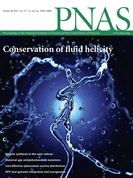Preservation of viral genomes in 700-y-old caribou feces from a subarctic ice patch
- Terry Fei Fan Nga,b,
- Li-Fang Chenc,
- Yanchen Zhoua,b,
- Beth Shapirod,
- Mathias Stillerd,
- Peter D. Heintzmand,
- Arvind Varsanie,f,g,
- Nikola O. Kondova,
- Walt Wonga,
- Xutao Denga,b,
- Thomas D. Andrewsh,
- Brian J. Moormani,
- Thomas Meulendykj,
- Glen MacKayh,
- Robert L. Gilbertsonc, and
- Eric Delwarta,b,1
- aBlood Systems Research Institute, San Francisco, CA 94118;
- bDepartment of Laboratory Medicine, University of California, San Francisco, CA 94118;
- cDepartment of Plant Pathology, University of California, Davis, CA 95616;
- dDepartment of Ecology & Evolutionary Biology, University of California, Santa Cruz, CA 95064;
- eSchool of Biological Sciences and Biomolecular Interaction Centre, University of Canterbury, Christchurch, New Zealand;
- fDepartment of Plant Pathology and Emerging Pathogens Institute, University of Florida, Gainesville, FL 32611;
- gElectron Microscope Unit, Division of Medical Biochemistry, Department of Clinical Laboratory Sciences, University of Cape Town, Rondebosch, Cape Town, 7701, South Africa;
- hPrince of Wales Northern Heritage Centre, Government of the Northwest Territories, Yellowknife, NT, Canada X1A2L9;
- iDepartment of Geography, University of Calgary, Calgary, AB, Canada T2N1N4; and
- jDepartment of Physical and Environmental Sciences, University of Toronto, Scarborough, Toronto, Ontario, Canada M1C1A4
-
Edited by Peter Palese, Icahn School of Medicine at Mount Sinai, New York, NY, and approved September 30, 2014 (received for review June 6, 2014)
Significance
Knowledge of ancient viruses is limited due to their low concentration and poor preservation in ancient specimens. Using a viral particle-associated nucleic acid enrichment approach, we genetically characterized one complete DNA and one partial RNA viral genome from a 700-y-old fecal sample preserved in ice. Using reverse genetics, we reconstituted the DNA virus, which replicated and systemically spread in a model plant species. Under constant freezing conditions, encapsidated viral nucleic acids may therefore be preserved for centuries. Our finding indicates that cryogenically preserved materials can be repositories of ancient viral nucleic acids, which in turn allow molecular genetics to regenerate viruses to study their biology.
Abstract
Viruses preserved in ancient materials provide snapshots of past viral diversity and a means to trace viral evolution through time. Here, we use a metagenomics approach to identify filterable and nuclease-resistant nucleic acids preserved in 700-y-old caribou feces frozen in a permanent ice patch. We were able to recover and characterize two viruses in replicated experiments performed in two different laboratories: a small circular DNA viral genome (ancient caribou feces associated virus, or aCFV) and a partial RNA viral genome (Ancient Northwest Territories cripavirus, or aNCV). Phylogenetic analysis identifies aCFV as distantly related to the plant-infecting geminiviruses and the fungi-infecting Sclerotinia sclerotiorum hypovirulence-associated DNA virus 1 and aNCV as within the insect-infecting Cripavirus genus. We hypothesize that these viruses originate from plant material ingested by caribou or from flying insects and that their preservation can be attributed to protection within viral capsids maintained at cold temperatures. To investigate the tropism of aCFV, we used the geminiviral reverse genetic system and introduced a multimeric clone into the laboratory model plant Nicotiana benthamiana. Evidence for infectivity came from the detection of viral DNA in newly emerged leaves and the precise excision of the viral genome from the multimeric clones in inoculated leaves. Our findings indicate that viral genomes may in some circumstances be protected from degradation for centuries.
Footnotes
- ↵1To whom correspondence should be addressed. Email: delwarte{at}medicine.ucsf.edu.
-
Author contributions: T.F.F.N., L.-F.C., Y.Z., B.S., R.L.G., and E.D. designed research; T.F.F.N., L.-F.C., Y.Z., M.S., P.D.H., A.V., N.O.K., W.W., X.D., T.D.A., B.J.M., T.M., and G.M. performed research; T.F.F.N., T.D.A., B.J.M., T.M., and G.M. contributed new reagents/analytic tools; T.F.F.N., L.-F.C., Y.Z., B.S., M.S., P.D.H., A.V., X.D., R.L.G., and E.D. analyzed data; and T.F.F.N., L.-F.C., B.S., P.D.H., A.V., R.L.G., and E.D. wrote the paper.
-
The authors declare no conflict of interest.
-
This article is a PNAS Direct Submission.
-
Data deposition: The sequences reported in this paper have been deposited in the GenBank database [accession nos. KJ938716 (Ancient caribou feces associated virus) and KJ938718 (Ancient Northwest Territories cripavirus)].
-
This article contains supporting information online at www.pnas.org/lookup/suppl/doi:10.1073/pnas.1410429111/-/DCSupplemental.





